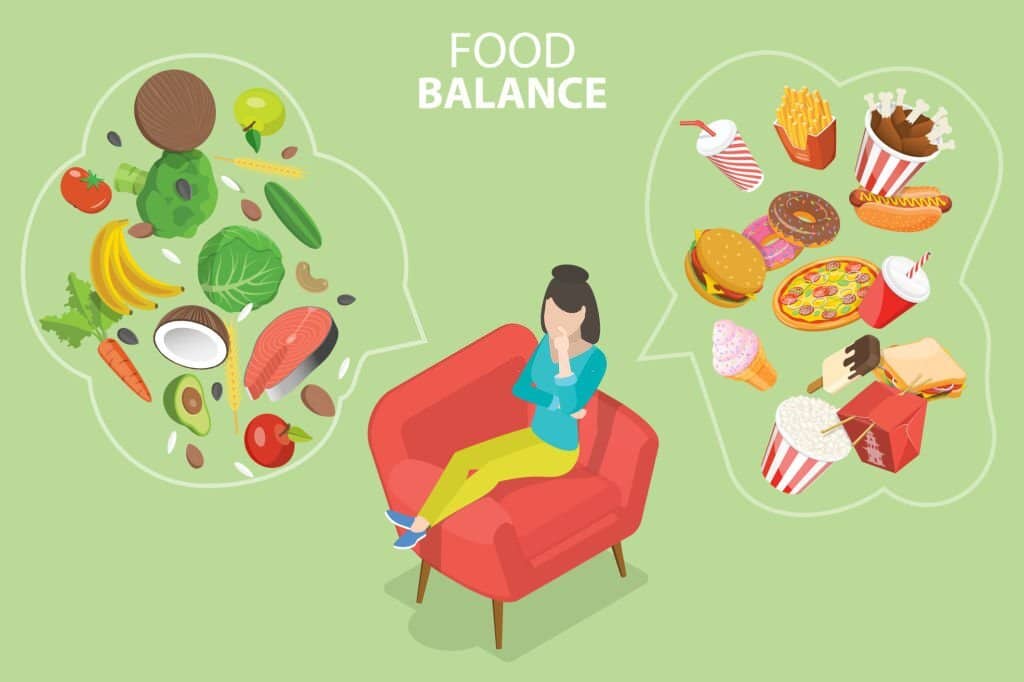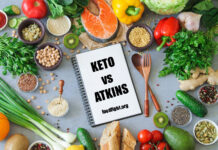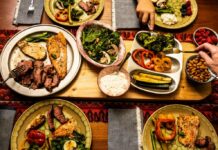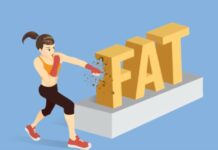In order to lose weight, most people opt for either a low-carb or no-carb diet, depending on their preferences. However, they all have one thing in common, and that is the reduction of carbohydrates (potatoes, rice, bread, etc.) and sugar.
Furthermore, you are also able to eat any kind of meat, vegetable, or fruit you prefer within the limits of the rules.
Despite sounding difficult, you can easily substitute many vegetable dishes for carb dishes. For example, you can easily swap out mashed potatoes for mashed cauliflower. The taste and eating experience are similar enough after an adjustment period that you may even prefer mashed cauliflower. Once you see how it feels (less bloated), the pounds start to fall.
Duke University's Dr. Eric Westerman explains the science and practice of low-carb diets in this 42-minute video.
What is A Low Carb Diet?
If you are wondering what a low-carb diet is, first, you need to know that carbohydrates are one of the three major types of chemical compounds that humans consume in large quantities.
The three major chemical compounds (also called macronutrients) are carbohydrates, protein, and fat.
When you follow low carbohydrate diets, you reduce your intake of carbohydrates so that you can lose weight. Thus, while you remove foods such as bread and pasta from your diet, you continue to consume meat, eggs, fish, cheese, and nuts, which are high in protein and fat.
Low-carbohydrate diets work on the principle that by consuming fewer carbs, you reduce the amount of glucose in your body, and after your body uses up the glucose, it burns fat for energy.
If this is taken to an extreme, your body will continually burn fat for energy. This is called ketosis.
Low-carb diet programs are broad in concept and encompass many different diets. Some try to limit carbs to a specific amount (such as to –grams), while others try to limit to a specific percentage (such as to –% of your total food consumption).
Among these diets, there are also differences in how MUCH they restrict carbohydrates. Some restrict it to as low as 5% and others up to 45%.
The US Dietary Guidelines suggest that 50% to 65% of your calories come from carbohydrates, so any diet plan restricting carbs to less than 50% is typically considered a low-carb diet plan.
The Controversy Around Low Carb Diets
Low-carb diets may be effective for many people, but they remain controversial among nutritional experts and health professionals. Opposition gets almost hysterical with some diets (the Atkins diet comes to mind). Here are some thoughts on that subject.
Several studies have shown that a low-carb diet can help you lose weight and remain healthy (see videos above and below). My suspicions are always raised towards “experts” who preach mainstream ideas (here, “eat less & exercise more”), even if the results are only mediocre.
No courage is necessary for preaching the mainstream since even if you are proven wrong, you will be wrong with everyone else, so no one will be held accountable. Even though I am not advocating any particular diet (please consult with your doctor before making a decision), trying something new takes courage and has my attention, particularly if it does not work well with the mainstream idea.
What is the Theory Behind Low Carb Diets?
Low-carb diet proponents make the following argument. For a car, gasoline is the main fuel. For the body, blood sugar, called glucose, is the main fuel. Carbohydrates are simply complex sugars, not much different from regular sugars from a body's perspective.
Glucose, your body's fuel, is easily converted from sugars and carbohydrates. You need to keep your glucose in a narrow range for your body to function properly.
Having too much glucose in your blood (consuming too much sugar or carbs) causes your body to release insulin, which in turn causes your body to store energy as fat, which is exactly what you don't want to do.
However, if your blood sugar level (glucose) is low, your body releases glucagon, which causes your body to convert stored fat into glucose.
Dr. Robert H. Lustig, a pediatric endocrinologist from the University of California, explains the impact of insulin in more detail. It is a short (8 min) video and very informative.
What Can I Eat on the Low-Carb Diet?
Low-carb diets allow you to eat a wide variety of delicious foods. You can eat meat, poultry, seafood, most vegetables, and some fruits. For instance, you can eat steak with grilled vegetables.
You'll have to adjust to eating steak without potatoes or bread at first, but once you do, you'll never miss it.
1. Protein
Eating any type of meat, poultry, or seafood on a low-carb diet is fine as long as you don't add breading (carbs) to them. Processed meats (deli meats, sausages, meatballs, meatloaf, nuggets) often contain added sugars and carbohydrates (bread).
2. Vegetables
Not all vegetables are allowed in a typical low-carb diet. Below is a list of low-carb vegetables allowed in most low-carb diets.
Asparagus, Avocado, Beet greens, Bell pepper, Broccoli, Brussel sprouts, Cabbage, Cauliflower, Celery, Collard greens, Cucumber, Dandelion greens, Eggplant, Endive, Escarole, Garlic, Kale, Leek, Lettuce, Mushroom, Okra, Onion, Radish, Shallot, Spinach, Tomato, Zucchini.
3. Fruits
Low-carb diets allow certain fruits in limited amounts if they are low in sugar and carbohydrates. Below is a list of low carbohydrate, low sugar fruits allowed on most low-carb diets.
Blackberry, Blueberry, Boysenberry, Elderberry, Gooseberry, Lemon, Lime, Mulberry, Raspberry, Strawberry
What are Some Delicious, Easy Ways to Make Low Carb Dishes?
If you are on a low-carb diet, you don't have to starve or give up good food. It may take some time to get used to it, but once you are on it for a while, you will be surprised how little you miss carbs and sugar. Listed below are two low-carb recipes to give you an idea.
Low-Carb Ground Turkey Stuffed Peppers
Quick Low-Carb Breakfasts
How to Get Started on a Low Carb Diet
If you want to begin a low-carb diet, you should keep in mind that you are trying to eliminate starchy and sugary foods. Here is a list of staples you should do away with.
- Bread
- Pasta
- Cereal
- Potatoes
- Rice
- Crackers
- Beans
- Flour
- Pizza
- Jams
- Sweets
- Baked Goods
You'll eat more meat, fish, cheese, nuts, vegetables (except potatoes), and fruits in place of these foods. For weight loss, you should eat cheese and nuts in moderation.
You can refine your diet even more by selecting vegetables, fruits, cheeses, and nuts that are lower carb and lower calorie. The above list, however, provides a great place to start, and it may be all that some people need to achieve their goals.
Substitutes for High-Carb Foods
If you are switching to a low-carb diet, here are a few ideas for substitute foods.
For Breakfast
In place of cereal, bread, muffins or bagels, eat eggs. You can also add an apple or a handful of fresh strawberries, blackberries, or blueberries.
For Bread, Rice, or Potatoes
Steamed, mashed cauliflower with butter is a delicious substitute for bread, rice, or potatoes. You will be surprised at how much they fill you up. Not only do they look like mashed potatoes, but they also don't taste too different either.
Other healthy options are steamed broccoli or carrots with butter, whole or mashed.
Flour and Baked Goods
Coconut flour and almond flour are popular and delicious alternatives to regular flour. You can use them to make most baked goods as well.
Xylitol can be used as a sugar substitute for baking in moderation (it still has two-thirds of the calories as sugar!). Just don't feed Xylitol to your pet, as it can be deadly!
However, you should eat baked foods in moderation, as these tend to have more calories than fresh vegetables and fruits.
Sweets
Stevia is a natural sweetener with zero calories that can be best used as a sugar substitute in liquid or semi-liquid foods/drinks such as sauces, coffee/tea, and yogurt. You can also try using Stevia in baked goods, but some people may find the aftertaste too bitter.
Common Problems When Starting a Low Carb Diet
It is possible to experience one or several side effects during the first couple of weeks after you start a low-carb diet. Below are some common side effects that you may experience and tips on how to deal with them.
Frequent Urination: Initially, on the low-carb diet, you may or may not have to go the bathroom more often to urinate. This is normal and results in your body burning stored glucose, which releases lots of water.
Fatigue, Headache, Muscle Cramps: In the low carb diet, as you start releasing water, you will lose salt, magnesium and other minerals, which can make you very tired, give you headaches or cause muscle cramps.
Increasing your salt and potassium (avocados & green leafy vegetables) intake can reduce and eliminate these symptoms. For muscle cramps, magnesium supplements can help.
However, these symptoms usually occur only during the initial few weeks and eventually disappear.
What You Can't Eat on a Low Carb Diet
Below are a list of restricted and prohibited foods on low carb diets:
Sugary Fruits
Most fruits have a high sugar (carbohydrate) content and are off-limits. The only fruit you can eat in moderation on most low-carb diets is berries (Strawberries, Blueberries, etc.).
Sugar
From the body's perspective, sugar and carbohydrates are identical. They are just different forms of sugar, which means you cannot eat sugar. Many sugar substitutes have issues and aren't proven safe.
For decades, an ancient herb known as Stevia has been used in Japan for 300 times as sweet as sugar. This herb is allowed on most low-carb diets because it is a natural herb. While Stevia does have a bit of an aftertaste, some brands have removed that aftertaste.
Starchy Vegetables
On a low-carb diet, starchy vegetables and grains are your mortal enemy. While most vegetables are perfect for a low-carb diet, starchy vegetables like corn, potatoes, carrots and beets are off limits.
Alcohol
While most alcohol is low in carbs and fat-free, your body burns up alcohol first before carbohydrates and fats, which now will get stored as fat instead of being burned.
That being said, you can enjoy alcohol occasionally and in moderation. But no alcohol is created equal. Dry wines (red & white) are usually the best choice, followed by hard liquor, followed by beer, with the worst being sweet liquors.
Grains
On a low-carb diet, starchy vegetables and grains are your mortal enemy. Anything containing grain or grain flour is off-limits. That includes bread, pastries, cake, pasta, breadcrumbs, battered coating and flour coating.
Nuts
Most nuts are off-limits on a low-carb diet, as they are loaded with carbohydrates. The only exceptions are raw almonds and raw almond flour, as long as they are eaten in moderation.
Can I Cheat While on a Low-Carb Diet?
Some people have success with a cheat day while on a low-carb diet. The theory behind that is that if you go on a diet, the body eventually adjusts to the diet, making weight loss harder after the initial weight loss.
In other words, you trick your body into thinking that you are not on a diet by having a cheat day (where you can eat what you want). It is likely that you will gain weight on that day.
There is a wide range of success with cheat days. For some, they are an all-you-can-eat cheat day, while for others, it is simply a cheat meal.
Knowing that you have a cheat meal or a cheat day in the week can also help psychologically. That may be the most important reason for a cheat meal or day during the week.
By understanding that it is okay to indulge in your cravings once in a while, you will be able to stay on a diet and succeed. By knowing that it is okay to cheat sometimes, you will not give up.
Eating Out on a Low Carb Diet
When it comes to eating out on a low-carb diet, the process is very challenging. Even if you eliminate all obvious carbs and sugars, such as the bun on a burger, there are still so many unknowns that make it such a challenge.
To stay with the hamburger, even if you eliminate the bun, you still don't know what they added to the meat (some breading to stretch the beef? or some sugar to make it tastier?). You can eat outside on a low-carb diet, but it requires research.
Types of Low Carb Diets
Due to the popularity and success of low-carb diets, several different versions exist. The following diets are all different forms of low-carb diets.
1. Atkins Diet & The New Atkins Diet
Angelina Jolie and Brad Pitt are just two celebrities who successfully used the Atkins diet. It is a low-carb diet created by Robert Atkins, which he popularized in his book “Dr. Atkins Diet Revolution” in 1972. It follows a 4 phase approach.
- Phase 1 is the most restrictive (no fruits, grains, bread or starchy vegetables) and lasts 2 weeks.
- Phase 2 re-introduces specific carbs on a limited basis, but low enough to continue losing weight.
- Phases 3 and 4 are the maintenance phases after you reach your desired weight, where carbs are increased but only to a point so that your weight is maintained.
The New Atkins diet is an update of the original Atkins diet with a greater emphasis on healthy food.
2. Dukan Diet
Jennifer Lopez, the Duchess of Cambridge, Kate Middleton and Giesele Bundchen, are just three celebrities who successfully used the Dukan Diet.
It is a low-carb diet designed by French nutritionist Pierre Dukan. It is a four-phase diet that starts with a no-carb approach for the first 10 days to kick start with fast weight loss.
3. Low GI Diet – Low Glycemic Diet
Britney Spears and Sharon Stone reportedly had success with the low GI diet.

Professor David Jenkins developed the diet at the University of Toronto. GI stands for Glycemic Index, which measures the impact on blood sugar (glucose) upon consumption.
It was originally developed for people with diabetes (who need to worry about blood sugar) but had also successfully reduced weight.
On this diet, you don't have to pay attention to calories but mainly eat foods that result in low blood sugar. This means that it is a low-carb diet since carbs raise your blood sugar.
4. Paleo Diet – Caveman Diet
Megan Fox and Matthew McConaughey reportedly succeeded with the Paleo (Caveman) Diet. The Paleo diet consists mainly of protein (meat, fish), vegetables, fruit, mushroom, roots and nuts. It excludes grains, legumes, dairy products, refined salt and refined sugar.
The Paleo diet was first popularized in the mid-1970s by Walter Voegtlin.
The basic idea behind this diet is that while the modern human has not lived in a cave for a few thousand years (an eternity from an individual perspective), the caveman day was just yesterday from a genetic and dietary need perspective.
For example, in the caveman days, the genetic imperative to “load up” on sugar and sweets whenever you came across them did not result in obesity since, in those times, the only sugar would have been in fruits. Those growing wild would have been available only sparingly and only during the summer and autumn.
The same genetic imperative to “load up” on sugar, when it is now available 24/7 at every corner, on the other hand, causes problems.
5. Ketogenic Diet
This diet is based on the fact that our bodies were built to run primarily on fat as fuel. When we eat carbohydrates, they turn into glucose in the bloodstream.
Glucose then travels through the body's circulatory system until it reaches cells called muscle cells. Muscle cells use glucose as their primary source of energy. Fat cells do not require glucose to function. They can store large amounts of energy in the form of triglycerides.
Triglycerides are made up of fatty acids attached to glycerol molecules. Fatty acids are chains of carbon atoms linked together by double bonds. Each double bond contains two carbons.
In order to burn fat, the body must break down these triglycerides. This process requires oxygen. So if there isn't enough oxygen, the body will switch over to burning glucose instead.
A ketogenic diet forces the body to burn stored fats rather than sugars. This results in more rapid weight loss than diets that rely on carbohydrate restriction alone.
Ketosis occurs when the liver breaks down fats into ketones. Ketones are produced when the body burns fat. As long as the body continues to produce ketones, it remains in a state of ketosis.
In addition to being a great way to lose weight, a ketogenic diet may help reduce epileptic seizures in children with epilepsy.
Conclusion
In conclusion, low-carb diets aren't just for people who want to shed pounds quickly. They're incredibly beneficial for everyone, regardless of their current weight. In fact, studies show that people who follow these types of diets tend to live longer than those who don't.
The reason for this is simple: carbs cause insulin spikes, which can lead to diabetes, heart disease, and cancer. By cutting out carbs from your diet, you're doing your body a favor by avoiding these diseases. So whether you're trying to lose weight, keep your blood sugar levels steady, or prevent future illnesses, a low-carb diet is definitely worth considering.






